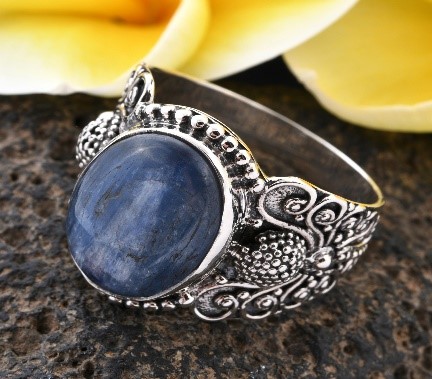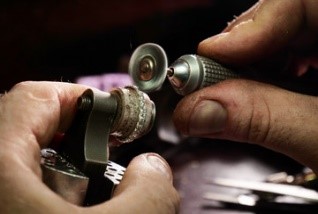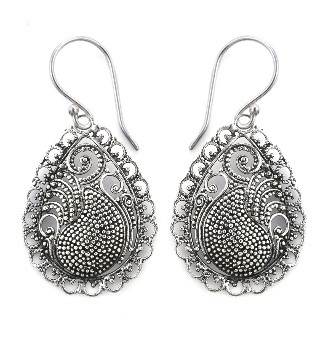Jewelry Enhancement – Milgrains
Category: Technique | Date: 09/04/2020

Milgrain means “one thousand grains” in French. A designing technique used in jewelry adding vintage charm. Millegrain, millgrain, or milgraine are some other spellings. It is the small metal beads on the edges of jewels. It appears like the rows of small grains on the frames of jewelry.
Milgrain is the round textures applied to a piece of jewelry. This small dotted design creates a handcrafted look.
Milgrain Application

Knurling process
Traditional Style: Milgrain was once a painstaking process in 1920 with expert craftsmanship. The traditional methods used were knurling and soldering.

Soldering Process
- Knurling – It looks like a small pizza cutter. It involves the serrated rotating wheels set into a handle. The wheels are rolled over the metal edges to create the granular effect.
- Soldering – It is a time-consuming process. Experts individually attach each tiny metal bead to the frame of jewelry.
Modern style:
- The designer draws the design with the help of computers. It is then sent to a printer to produce a wax mold that is casted into the metal die form. And the work is done.
Historical Significance

For thousands of years, different cultures use milgrain as jewelry decoration. Initially, it was used only in Southeast Asian jewelry. Currently, it is prevalent in both Indian and Chinese metalwork. Milgrain work owes its fame to the Edwardian era. During excavation in South east Asia, earrings and rings were discovered featuring milgrain.
This technique did not become popular until the Edwardian Era. Jewelers restricted usage of milgrains until the very early 20th century, as it requires enormous effort, artistry, and technique to create. Milgrain was designed with the exquisite detailing on platinum. It was considered as an ornamental element suiting the royal status and wealth.
The Art Deco period was a blooming phase for milgrain design. As the jewelers incorporated this technique on white gold jewelry. It was used to add intricacy to the bold geometric designs.
The Art Deco period that followed saw milgrain become more available to the masses as jewelers incorporated the technique with white gold jewelry pieces. As a result, the jewelry with milgrains was more valuable. It is this period when milgrain was associated with engagement rings and wedding bands.
Milgrain Jewelry Care
Milgrain adds an antique look to the jewel. Since, it is a feature created by metals, it has a limited lifespan. Gradually, the tiny beads goes away with frequent use by rubbing and touching. Addition of milgrains require extra care.
A regular cleaning of milgrained jewels will maintain the metal sparkle. Just clean them with warm water, mild soap, and a small, soft brush to remove the occasional build-up of oils and dirt. Below are some of the tips for maintenance and care of jewelry with milgrains.
Never soak pearls, coral, turquoise, howlite, or amber jewelry in water. Improper cleaning can easily damage these porous gemstones. Avoid harsh soap or chemical jewelry cleaner. Don't use an ultrasonic cleaner or steam cleaner. It can lessen the lustrous look of organic gems.
Just use a small make-up brush dipped in shampoo and water to clean. Or else, you can wipe the jewels with a clean and moist cloth.
- Keep it in a cool and dry place.
- Store it in the jewelry aligned box with a designated area for every piece of jewel.
- Remove it before you get in the shower or apply lotions or sprays.
- Avoid rubbing and scratching the jewelry against anything.
- Restore the milgrains about once a decade, if worn often.